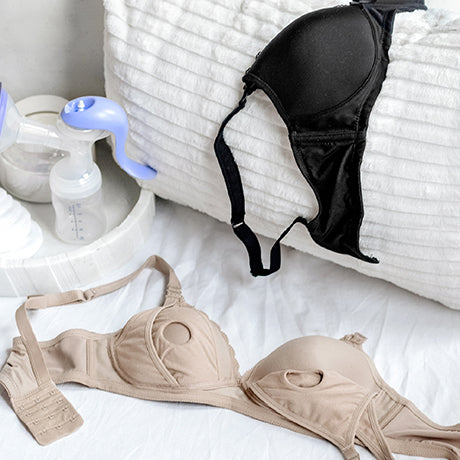Infant Sleep Part 1: Sleep Basics
Your baby and sleep are two fascinating topics that hopefully mesh well. Research on sleep is prolific, even infant sleep. We know that babies dream just like adults and they can have nightmares and night terrors as well. Over the next few weeks we’ll be exploring infant sleep as it pertains to dreams, nightmares and night terrors.
First, some basic information about infant sleep:
 Every parent wishes for their baby to sleep soundly and for a long period of time, especially at night. But according to Dr. Sears, babies’ sleep patterns differ from older children and adults, which is one reason why they wake up in the night more often.
Every parent wishes for their baby to sleep soundly and for a long period of time, especially at night. But according to Dr. Sears, babies’ sleep patterns differ from older children and adults, which is one reason why they wake up in the night more often.
Babies spend most of their sleep time in REM sleep. That stands for Rapid Eye Movement and it is a stage of sleep when the brain is very active. The additional REM sleep is by design because it’s a time when babies are learning. Blood flow increases to the brain and nerve proteins are forming. Your baby is recalling things she experienced throughout the day and processing them as storage. More brain development occurs during infancy than any other time in your baby’s life and sleep accelerates the process. She’s getting smarter with each snore!
Babies also have shorter sleep cycles than adults. We usually have sleep cycles that last around 90 minutes. Babies’ sleep cycles are around 50-60 minutes. You may notice your baby shifts and fidgets about every hour during her sleep. This is because she’s starting a new sleep cycle. During the transition, she may be more likely to wake, especially if she is stimulated by perhaps a hungry belly, noise or she’s feeling too hot or cold.
Dreams and nightmares (bad dreams) occur during REM sleep. Night terrors happen during the transitional stages of sleep when the brain is struggling between whether to stay asleep or wake up. But more on that later.
Between more REM sleep and shorter sleep cycles, babies are pretty light sleepers. About half that of adults, in fact. Falling asleep takes longer for babies too. Getting into a deep sleep takes around 20 minutes for most infants. When your baby falls asleep in your arms you may notice that your baby’s eyes are flittering beneath her eyelids, and she’s making facial expressions, hand movements and even mouth suckling for the first 20 minutes or so. Then you’ll feel your baby’s breathing calm and lengthen, her body will feel limp and you’ll know she’s in a deep sleep.
Some babies have a hard time getting to sleep at bedtime or getting back to sleep after waking up. In early infancy babies often need parents to help them fall asleep or fall back asleep. Rocking your baby, breastfeeding her, shushing her, rubbing her belly or back and being present can make your baby feel secure and calm enough for sleep. Your baby’s sleep habits are not a testament to good parenting or a sign of bad parenting. Rather, it’s inherent to who your baby is and a baby’s natural lighter sleep tendencies.
Stay tuned next week when we discuss dreams and nightmares in infant sleep.
The post Infant Sleep Part 1: Sleep Basics appeared first on Leading Lady.





